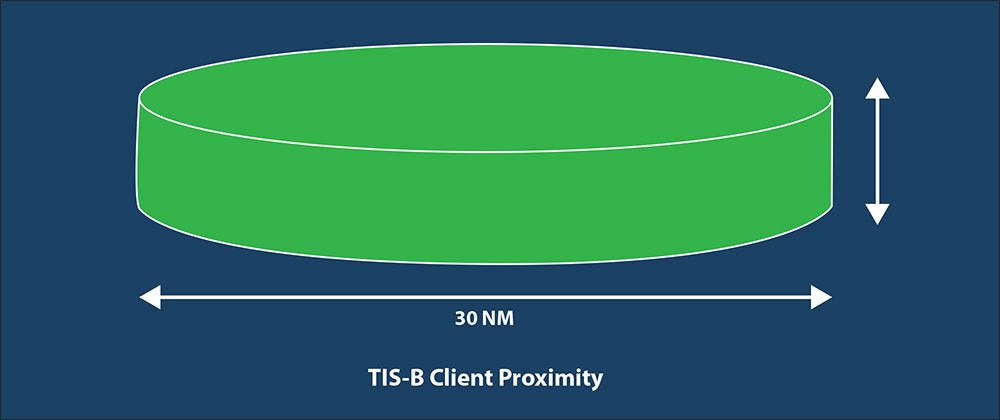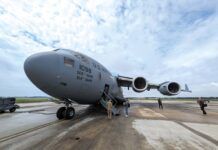The primary purpose of Automatic Dependent Surveillance-Broadcast (ADS-B) is to provide the FAA with the next generation of ATC surveillance capability at lower cost. ADS-B can be more accurate while simultaneously reducing the installation and maintenance costs of existing radar systems. It permits greater coverage where radar isn’t practical, such as in mountainous areas and over the Gulf of Mexico. With ADS-B, ATC expects to safely handle more traffic in the same airspace. Much of the cost justification is based on the elimination of about half of the current radar installations. But don’t plan on tossing your transponder yet. Radar will still be used as backup to the ADS-B system and for TCAS.

Lotsa Pieces & Parts
ADS-B in the USA is more complicated than in the rest of the world because of the FAA’s dual frequency strategy. ADS-B on 1090 MHz, the international standard, extends the Mode S transponder and is called 1090ES for “extended squitter,” referring to how it sends its data. There is insufficient bandwidth for Flight Information Service-Broadcast (FIS-B) in-flight weather. The 978 MHz ADS-B uses a MITRE Corporation technology called Universal Access Transceiver (UAT), with plenty of bandwidth to accommodate FIS-B data.
After January 1, 2020, aircraft requiring a transponder will also require ADS-B Out (transmit). Below 18000 feet, you may choose either UAT or 1090ES or both. Above 18000 feet, 1090ES is required and UAT receive-only is optional while UAT transmit is prohibited. Using 1090ES is the natural choice for the airlines because mode S transponders are already installed, almost all flights are above FL180 and 1090ES meets the international standard. UAT is the natural choice for most of GA because one box will provide compliance below 18000 feet and it provides that free FIS-B. Higher flying GA, especially corporate and most turbine aircraft, will require 1090ES above FL180 but may also opt for UAT receivers to gain access to free FIS-B weather.
There’s no requirement for ADS-B In (receive). But without it, you’re only compliant with the system without getting anything in return. If you add ADS-B In, you can potentially receive both traffic information and weather.
Pay to Play
With ADS-B In, you can monitor air-to-air broadcasts of ADS-B Out equipped aircraft on your frequency (UAT, 1090ES, or both). This works autonomously with no ground stations required. But, you can’t receive targets that aren’t equipped with ADS-B Out or are on a different frequency.
This is where ADS-B ground stations, also called a Ground Based Transceiver (GBT), comes in. It transmits both Traffic Information Service-Broadcast (TIS-B) and the ADS-R (“R” for “Rebroadcast”). However, the GBT only broadcasts target information specifically tailored for each “client aircraft” with ADS-B Out installed. If you only have a portable ADS-B receiver, you will miss the vast majority of today’s traffic since you’re not participating with ADS-B Out.
There are two versions of ADS-B, cleverly named by the FAA after exhaustive study as Version 1 and Version 2. Version 1 meets the earlier TSO C166A or TSO C154B. It’s installed mostly by airlines and early adopters. Equipment includes the Garmin GTX330ES, GDL90 and the TRIG TT31/22.
Version 2, meeting TSO C166B or TSO C154C, is required to meet the 2020 mandate, but you would be hard pressed to find an aircraft flying today with this version installed. Version 2 systems require an aircraft make and model-specific STC. Garmin’s GDL88 and an updated version of the GTX330ES are Version 2 systems, available about the time you’re reading this, with Trig a few months behind.
Version 1 and Version 2 aircraft are handled differently by the GBT. A client aircraft with Version 1 cannot notify the ground station that it is capable of receiving TIS-B, so the ground station just broadcasts the TIS-B on the same frequency as the aircraft ‘s ADS-B Out. Version 2 client aircraft broadcast their receiver capability (none, UAT only, 1090ES only, or both), so the GBT can tailor the client services accordingly.
So, if you have a single frequency portable receiver on UAT and a Version 1 1090ES installed in the aircraft, the GBT broadcasts your traffic service on 1090ES. Your UAT portable receiver will remain blissfully blank, even in the face of head-on traffic.
You’re no doubt wondering—or worrying—how much this will all cost. Fasten your seatbelt. The FAA estimates “the aggregate cost for airspace users to equip with ADS-B avionics could range from $2.5 billion to $6.2 billion” and ADS-B equipment installation costs for the GA user could range between $7644 and $10920 for ADS-B Out and $10444 and $29770 for ADS-B In. Those are the government’s numbers.
Payback to Play
While the FAA saves billions on the decreasing requirement for radar, you’ll be spending a wad of cash, too. However, your expenditure isn’t without some benefit. So far we’ve only discussed the direct ADS-B capabilities, but ADS-B may be more compelling when you realize that you can see not just other ADS-B-equipped aircraft, but all the transponders ATC can see. Once you’re participating you can use all these TIS-B traffic and FIS-B weather components free of subscription charges.
In order for TIS-B to work, the non-ADS-B target has to have a mode C transponder and be inside radar coverage. TIS-B broadcasts are generated by the GBT anytime the target aircraft is close to a client’s proximity. Proximity is described as a hockey puck, with vertical dimensions of 3500 feet above and below the client within a 15 nautical mile radius. If a potential target penetrates the client’s airspace, the GBT broadcasts the target’s position. An aircraft with only a portable receiver can receive these broadcasts, but the received broadcasts of targets are not based on the aircraft’s position and don’t represent targets that may be potential collision threats.
Let us say you have a portable receiver and are eastbound 14 nautical mile north and 3000 feet above a 120 knot southbound GBT client. In 30 seconds, your aircraft will be just over 15 nautical miles from the client aircraft. You will have a good view of TIS-B targets between your position and the client aircraft, but will be oblivious to traffic 500 feet above you or to the north and east of your track. That Mode C target on a south westerly course at your altitude and a little over a mile away will not show up on your portable, so you had better keep your Mark One eyeballs in the game.
Unless you have a dual frequency ADS-B receiver, you can only see ADS-B targets on the frequency as your receiver. This is where the ADS-R (Rebroadcast) service enters the picture, connecting the two frequencies. If two ADS-B Out/In equipped aircraft are in close proximity of one another, with one using 1090ES for Out/In and the other using UAT Out/In, neither aircraft can receive the other’s position broadcast directly. The GBT re-broadcasts the first aircraft’s position on UAT and the second aircraft’s position on 1090ES. Each aircraft is a both a target of the other aircraft and a client of the ADS-R service. The ADS-R hockey puck around a client is a little larger than the TIS-B hockey puck. The vertical size is +/- 5000 feet with the same 15 nautical mile radius around the client.
Free Weather
Probably the biggest attraction of ADS-B is the free weather service offered by the GBT on the UAT frequency. FIS-B data is continuously broadcast by the GBT without requiring the installation of an ADS-B Out capability. Today there are numerous portable UAT receivers that may be purchased for approximately $800 (Garmin, Stratus, SkyRadar, Clarity, etc.) that support a variety of displays. In most instances, you have to be airborne to receive the FIS-B weather products.
Of these, graphical NEXRAD is one of the most desired products and comes in two flavors: a regional product and a CONUS product. The regional variety has a resolution similar to XM weather NEXRAD and covers an area up to 250 nautical miles from the GBT. Outside the local area, the CONUS product has a very course resolution covering about 25 times the area of the regional product. FIS-B NEXRAD data comes from the same radar source that XM uses, so it takes the same amount of time for the data to be assembled, but it is transmitted every 2.5 minutes in comparison to XM’s 5 minute cycle. WSI processes the ADS-B data and uses a composite of base scans from overlapping radar sites whereas XM processes the data as a composite of different elevations in the radar scans. Both systems provide essentially the same capability.
Other FIS-B graphical products include AIRMET/SIGMET, TFR and METAR status (LIFR, IFR, LVFR, and VFR). Text products include METAR, TAF, Winds/Temperatures Aloft, Pilot Reports, NOTAMS, Airspace Status, and TIS-B status.
So, you have a lot of options, depending on how much you want to spend and how much you want to get out of it. One thing is for certain, though. If you use a transponder, you’ll be spending a lot of money to keep playing in the same airspace. So far, defining “a lot of money” has too many variables to quantify, but today the entry is well north of $5000.
John Collins is a self-made expert on all the various ADS-B permutations and an experienced CFI/CFII in North Carolina.





